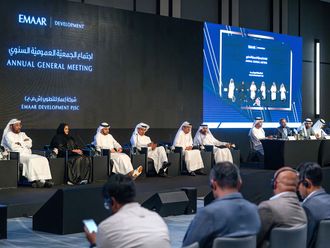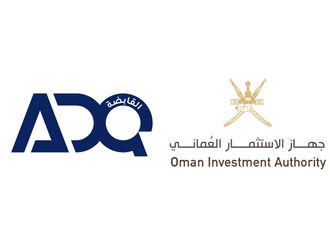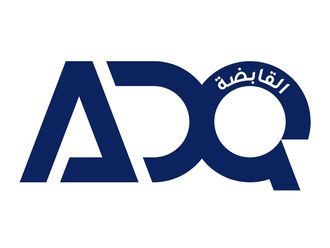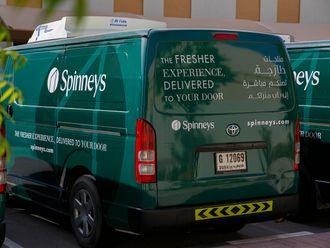Dubai: Post an eventful November, with Saudi Arabia announcing a major anti-corruption purge, and the Organisation of Petroleum Exporting Countries (Opec) and some non-Opec countries, together part of Declaration of Cooperation, agreeing to extend oil production cuts, market focus has now shifted to their implications on the regional economic environment.
The agreement reached in the November 30 Opec meeting surely aids in global oil markets balancing, however, the latest fundamental expectations laid by Opec and Energy Information Administration (EIA) suggests that the road to balancing will be a long-drawn one, and thus, gives us limited comfort in continual strength in oil prices in 2018 from the current levels. Nevertheless, some early signs of market balancing augurs well for Brent price average, with EIA now anticipating Brent to average at $57 per barrel (bbl) in 2018 compared with 2017 expectations of around $54/bbl.
The improved oil price outlook coupled with announced economic measures including, introduction of VAT, increased electricity tariffs, potential increase in gasoline (and other energy) prices, lay a strong foundation for the Saudi government to look for higher expenditure in 2018, after a muted nine months in 2017 wherein the expenditure merely increased by 0.4 per cent year-on-year.
Within the UAE markets, the market was driven by new IPOs, with Adnoc Distribution raising Dh3.1 billion in early December, after Emaar Development raised Dh4.8 billion in late November. The secondary market performance of Adnoc Distribution though was materially better, with stock now trading at some 10 per cent higher than the IPO price compared to Emaar Development now trading at 11 per cent below its offer price.
Looking ahead, we expect the oil price to be range bound (with downward bias) from the current levels, while expect Saudi market participants to increase focus on infrastructure-driven sectors as it is expected to be one of the major beneficiaries of any expansionary budget — well-reflected in $19.2 billion announced stimulus last week.
Within the UAE markets, Emaar Properties’ disappointing dividends translated into its share price plummeting by over 9 per cent and market underperformance by over 6 per cent. The announced special dividend of Dh4 billion, likely includes the company’s annual dividend payouts of around Dh1 billion, and thus implies one-time payment of Dh3 billion (yield: 6.1per cent) . This compares to total proceeds of around Dh8.7 billion, including Dh 4.8 billion Emaar Development IPO proceeds and Dh3.9 billion dividends to Emaar Properties, and suggests that the company is conservatively managing its balance sheet ahead of the major project financings.
Such a strategy underscores some capital misallocation risk. However, we continue to see risk-reward balance as favourable in Emaar Properties as valuation remain attractive at price to net asset value (P/NAV) of under 0.5x. On Adnoc Distribution, the pace of the announced strategic measures will be the major driver for the earnings trajectory, and thus, the share price performance as potential of valuation multiple expansion is limited at current levels, in our view. Adnoc’s short-term dividend profile is attractive, with anticipated 6.4 per cent yield based on expected 2018 dividends and a one-off special dividend.
Since May 2017, when the initial signs of oil market rebalancing appeared, the market saw a decline in OECD commercial inventories by over 80 million barrels between May and November, which supported recovery in Brent oil price by over 30 per cent ( from under $50/bbl to current levels of around $64/bbl). Also, the agreement, on November 30, 2017, between Opec members and some non-Opec members on extension of production cuts to end of 2018 reflects favorably on further inventory rationalization. However, looking ahead, our analysis of Opec and EIA oil demand and supply dynamics reflects that the inventory drawdown will be at a tepid pace, and thus, will keep any potential upward momentum in oil price under check. Opec and EIA, both, expects global oil demand to remain sanguine, with 2018 global projected incremental growth at 1.51 million bbl a day and 1.63 million bbl a day, respectively, after anticipated growth of 1.53 million bbl a day and 1.38 million bbl a day in 2017.
On the supply side, both the agencies expect the US to remain the major contributor to incremental barrels, with Opec/EIA expecting the US oil supplies to increase further by 1.05 million bbl a day and 1.27 million bbl a day, respectively, in 2018. Such demand-supply expectations suggests that EIA anticipates limited inventory drawdowns in 2018, and in fact, EIA’s latest December report suggests that OECD commercial inventories are likely to increase by around 40 million barrels by December 2018 compared to November 2017 levels.
Opec estimates suggests that ‘ call for Opec crude’ – a determinant of inventory drawdown will increase by 0.34 million bbl/day in 2018. Such expectations translate into muted inventory drawdown in 2018, and we consider inventory rationalization to be a more of late 2018/early 2019 event. Interestingly, Opec’s remarks in November 2017 meeting that the production cuts will be driven by its goal of normalizing inventories reflects that such production cut extension will be data-driven, and confirms a new emerging framework for the global oil markets.
Within Saudi market, all the market focus is on 2018 budget, expected to be announced on December 19,2017, and market expectations of an expansionary budget has translated into traction on laggard sectors, like cement — wherein the stocks increased by an average of 8 per cent over the past week . Although we expect expansionary budget to benefit the country’s cement sector — we don’t expect addressal to the underlying structural issues in the cement sector in the near-to-medium term, and thus, remain selective within the sector. Saudi cement sector demand declined by 22 per cent year-on-year in the eleven months of 2017, after a decline of 10 per cent in 2016. However, its demand, from global perspective, remains high at around 1,300kg per capita, and thus, reflects limited upside in the medium-to-longer term, specifically as economic focus shifts to service-driven economy in the longer-term.
In fact, even though the sector profitability has plummeted over the past year, the average EBITDA margin for the top ten companies stood at 46per cent in Q3 2017 — significantly higher than their global peer average of around 23per cent, and translating into a comfortable cash profit per tonne at 73 Saudi riyals, much higher than the global peers. The structural issues, including 1) high inventories at 10 months of annual demand and 2) potential increase in fuel oil prices in 2018, suggests that the longer-term normalized profitability will be materially lower and there is likely to be limited government support amid broader subsidy reforms. Within such framework, we like the companies which have a strong balance sheet and an attractive dividend profile, and thus, prefer exposure to Arabian Cement and City Cement within the the Saudi cement sector.
The writer is a vice-president with Shuaa Capital and can be reached at im@shuaa.com.












